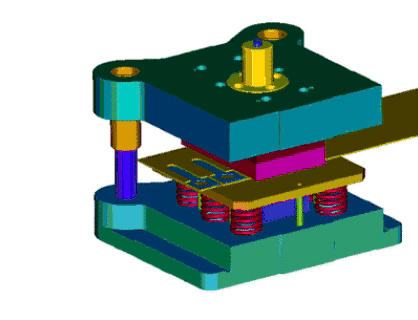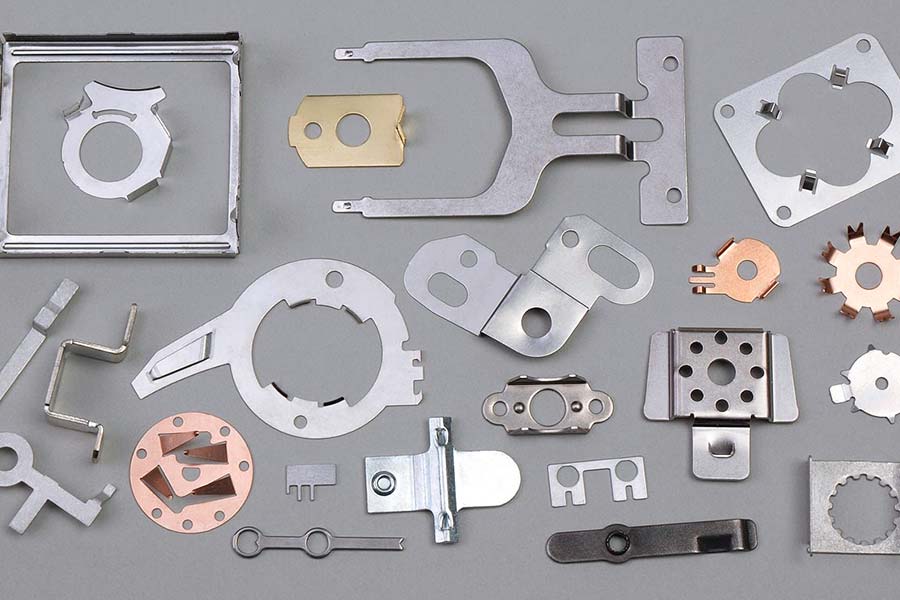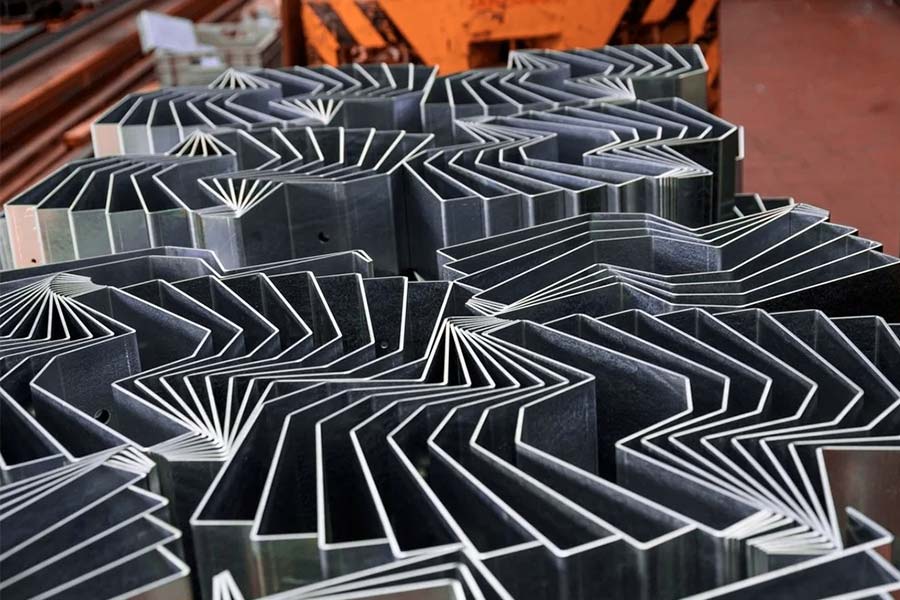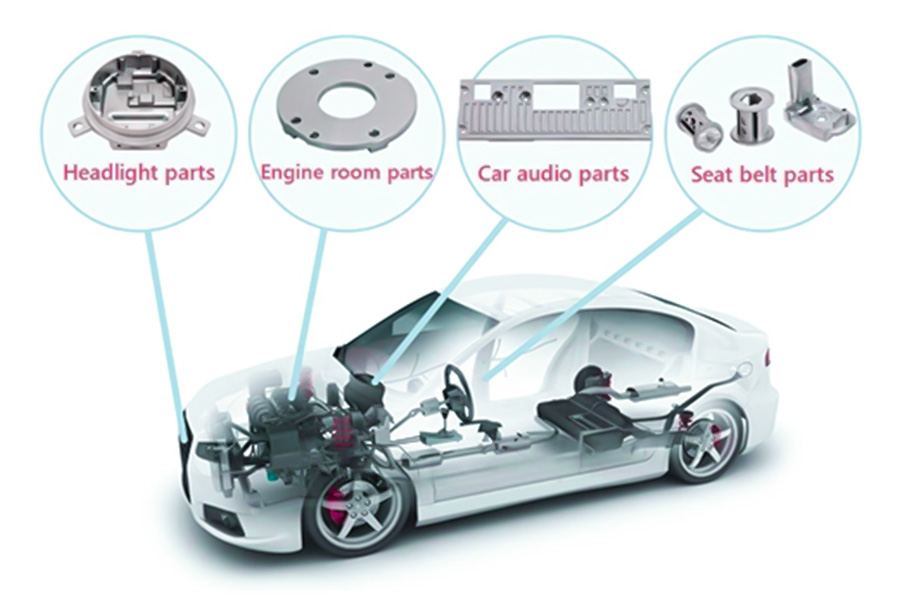금속 스탬핑의 핵심 원리는 고효율, 낮은 소비 및 우수한 일관성의 장점으로 고정식 금형을 사용하여 특정 모양으로 구부리거나 늘리는 것입니다. Metallely에서 사용됩니다. 복잡한 구조 부품 제조에 대한 제조는 현대 산업 에서이 프로세스의 절실성을 증명합니다. 다양한 산업에서 금속 스탬핑의 장점, 공정, 장비 유형 및 응용 요구 사항
< "> 
스탬핑?
정밀도 및 일관성
금속 스탬프 곰팡이는 CNC 가공 기술, 허용 오차 정확도 ± 0.005mm,
생산성
금속 스탬프 곰팡이를 빠르게 전환 할 수 있으며 자동 프레스의 도움으로 기기는 시간당 수백 조각을 생성 할 수 있습니다. 홈 어플라이언스 케이싱 및 3C 제품 구조 구성 요소와 같은 생산 .
3. 코스트 장점
금형은 수천 번 재사용 될 수 있으며 시간이 지남에 따라 단위 비용을 희석시키고 85%이상의 재료 활용 속도를 달성 할 수 있습니다. <"> < "> Cnc와 비교되어 있습니다. 폐기물, 특히 알루미늄 합금 및 스테인레스 스틸과 같은 고 가치 재료의 경우
4. Complex Shape Processing Capability
다중 점진적인 곰팡이를 통해 펀칭, 굽힘 및 스트레칭 과정은 새로운 에너지 차량의 배터리 트레이 .
Metal 스탬프 aer stamping에 대한 Titanium Alloy Components의 의료 기기의 의료 기기의 지원 맞춤형 디자인 . 금형 매개 변수를 조정하여 산업. 1.DESON 및 MOLDEN 만들기 < "> span class =" "sentence =" "" " Data-TranslateId = "2F57C446C1BED99C2929CE73BA1FE7C8"DATA-POS = "0"DATA-LEN = "200"DATA-V-7B79C893 = "" "> 고객이 필요한대로 CAD 파일을 필요에 따라 CAD 파일을 제기 한 후 는 정밀 스탬핑 요구 사항을 준수하기 위해 설계 체계를 최적화합니다. 고급 소프트웨어를 사용하여 고객이 요구하는 엄격한 사양을 충족하는 고정밀 금속 스탬퍼 곰팡이를 설계합니다. 재료 선택 및 절단 엔지니어링 요구 사항에 따라 50 개 이상의 금속 재료 (예 : 스테인레스 스틸, 알루미늄, 구리 등)에서 해당 플레이트를 선택합니다. 제품 사양이 업로드 된 후 직접 쿼리, 의사 결정 시간이 단축됩니다. data-translateid = "3EA67125A5020A85921C94285FF20887"data-pos = "3"data-len = "27"data-v-7b79c893 = "" "> 자동 스탬핑 장비, 스탬핑, 굽힘, 스트레칭 및 기타 프로세스는 금속 공정의 단일 스탬핑에서 완료됩니다. href = "https://jsrpm.com/contact-us"> JS의 지능형 생산 라인은 1-2 주 안에 빠른 배송을 제공합니다.
4. data-len = "40"data-v-7b79c893 = ""> 표면 처리 및 품질 검사 스탬핑 후 버 제거, 도금, 스프레이 및 기타 부가 가치 서비스를 제공합니다. 인공 지능 비전 검사 시스템과 결합하여 98%가 넘는 제품 자격 요금으로 재 작업을 줄입니다. 5. data-translateid = "35aff8989ad8b39d263d3552a36b8ec6"data-pos = "3"data-len = "22"data-v-7b79c893 = ""> 폐기물 재활용 시스템을 사용하여 스탬핑 프로세스의 에너지 소비는 15%감소하여 환경 보호 요구 사항을 충족시킵니다. In the process, JS saw a 25% annual increase in 주문을 반복하십시오. 유압식 스탬핑 장비 : 유압 시스템, "> "> 대형 금속 시트의 고전력 스탬핑에 적합합니다. 구조. 유압식 스탬핑 장비 : 유압 시스템은 안정적인 압력을 제공하며, 자동차 빔 및 중장기 구조물의 형성과 같이 높은 정밀도가 필요한 금속 작업에 적합한 안정적인 압력을 제공합니다. 판 두께. < data-translateid = "a9ad4b0f0b6b5a8c7a978f6d5240c80c"data-pos = "0"data-len = "186"data-v-7b79c893 = ""> < "> <"> < "> <"> Crankshaft 연결로 구동됩니다. href = "https://jsrpm.com/contact-us"> 고속, 대형 스탬핑 금속 생산에 적합한 홈 어플라이언스 쉘, 3C 제품 금속 브래킷 등과 같은 대형 스탬핑 금속 생산에 적합합니다. data-pos = "186"data-len = "78"data-v-7b79c893 = ""> 높은 생산 효율과 높은 안정성이 특징입니다. 4. data-v-7b79c893 = ""> CNC 스탬핑 머신 : <"span class = "sentence" data-translateid = "d4f0eb3927f07530064003e50632168c"data-pos = "0"data-len = "216"data-v-7b79c893 = ""> < "> <"> 서보 모터를 사용하여 스탬핑 뇌졸중과 압력을 정확하게 제어하기 위해 알루미늄, 자석 합금 및 기타 경량 재료의 금속 가공에 적합하며 30% 에너지보다 더 많은 에너지를 절약 할 수 있습니다.
6. data-v-7b79c893 = ""> 전단기 : 그것은 금속 시트를 직선으로 자르기 위해 특별히 설계되었으며 스탬핑 라인 앞에서 코일 또는 큰 크기 플레이트를 가공하기 위해 종종 사용됩니다. 벤드 머신 : 곰팡이 프레스를 통해 굽힘 및 형성을 달성하기 위해 판금 및 형성을 달성하기 위해 판금 및 3D 구조 처리에 일반적으로 사용되는 방법입니다. 8. data-len = "21"data-v-7b79c893 = "" "> 미세 블랭킹 프레스 : 스탬핑 및 전단 기술의 조합, 버프 프리 및 고품질 스탬핑 금속 프로세스, 기타 정밀 구성 요소. 레이저 보조 스탬핑 시스템 : 스탬핑 금속의 처리 효율은 레이저 사전 튜팅 및 스탬핑의 조합에 의해 개선됩니다.
1. Data-TranslateId = "C6D0154640EB12BD1B3996B671076756"Data-POS = "3"Data-Len = "17"Data-V-7B79C893 = "" "> 2. data-v-7b79c893 = ""> 장비 및 곰팡이 의존성 기본 과정은 기본 과정입니다. 스탬핑?

메탈릭 <메탈릭 클래스 = "sentence"data-translateid = "157a2816c624a49a0da3e1e9253d3aa4"data-pos = "0"data-len = "170"data-v-7b79c893 = ""> data-v-7b79c893 = ""> 스탬프 곰팡이를 누르고 누릅니다. BONNETS.
- 금속 스탬핑은 깊은 플라스틱 변형을 통해 복잡한 구조를 실현하고 재료의 높은 재료 연성이 필요합니다. .
- 판금 제작 은 주로 얕은 벤딩 또는 절단에 적합합니다. 부품.
< "> 5. data-len = "15"data-v-7b79c893 = ""> 표면 품질
비교 항목
금속 스탬핑
Metal FABRICATION
단가 (대량 생산)
≤ $ 0.5 (연간 100,000 조각을 생산할 때
$ 2-5 (작은 배치).
단일 조각 생산 시간 (초)
0.5-5 (고속 스탬핑은 0.1 초 미만에 도달 할 수 있음).
30-300 (프로세스에 따라).
금형 비용 ($ 10,000)
5-50 (복잡한 금형의 경우 더 높음).
0.1-5 (일부 부품은 곰팡이가 필요하지 않음).
최소 배치 경제
1-100 조각.
전형적인 생산주기
금형 개발은 2-4 주가 걸리고 대량 생산은 1 주일부터 시작됩니다. .
금형 무료 개발, 단일 조각 처리는 3-7 일이 걸립니다.
재료 활용률
85% -95% (프로그레시브 곰팡이는 폐기물을 줄입니다)
70% -90% (절단 손실+코너 재료)
폐기물 처리 비용
High (많은 스크랩으로 추가 처리가 필요). .
.
간단히 말해서 금속 스탬핑은 Metallic 스탬프, 판금 fabrication is a combination of cutting and bending, which complement each other to meet the needs of different industries.
What are the applications of combining composite materials with metal stamping?
1.Car lightweight components
- Application: JS helps car companies reduce weight by more over 30% maintaining crash collision safety combining metal stamping structural components, such as frame crossbeams, with carbon fiber composites. Metal stamping parts are formed by a metal stamp process that provides high rigidity support in key areas, while composite material covers non-bearing areas to reduce overall weight.
- Technical highlights: JS's CNC machining technology can accurately control the tolerance (±0.005mm) of metal punch to ensure seamless connection with composites and reduce assembly errors.
2.Aerospace heat resistant components
- Application example: A satellite project combines titanium alloy punch and ceramic matrix composites for use in rocket engine nozzles. Metal stamping parts can withstand high temperature and pressure environment, while the outer layer of composite material provides thermal insulation.
- Technical highlights: JS's automated production line can complete metal stamping and composite material coating at the same time, shorten the production cycle to 60% of traditional processes and achieve a yield rate of 98%.
3.Consumer electronics cooling module
- Application example: The high-end smartphone heat sink adopts the aluminum alloy stamping frame and graphene composite integrated design. Metal stamping parts are processed by metal stamp technology to ensure the electromagnetic shielding performance of the finished product, while composite materials effectively conduct heat.
- Technical highlights: JS's precision machining technology can achieve 0.02mm of micropore processing to meet the density requirements heat dissipation holes, while reducing overall thickness by 0.5mm through material composite.
4.Medical devices
- Application example: Stainless steel stamping frame and PEEK composite material for external fixation support of orthopedics. Metal stamping parts provide precise support, while composite materials reduce weight and prevent X-ray interference.
- Technical highlights: JS's flexible manufacturing system supports small volume customization of production, up to 7 working days from design to delivery, and serves multiple international medical device manufacturers.
5.New energy storage systems
- Application example: The battery shell adopts the composite structure of aluminum magnesium alloy punch and fiberglass composite to ensure mechanical strength and improve corrosion 저항.
- JS's process can reduce the weight of the casing by 18% while improving battery life through simulation.

Which industries does metal stamping help?
1.Automotive industry
This is definitely the biggest beneficiary! Think about it, how many things on a car are stamped out of metal? Doors, roofs, hoods, trunk lids and other shells (body coverings), the supporting skeletons (frames, chassis parts), and various brackets, brackets, fuel tanks, exhaust pipe parts, etc., are too numerous to count.
Stamping allows automakers to produce these key parts quickly and cheaply, and with stable quality. Now everyone is pursuing lighter and more fuel-efficient cars, and materials such as high-strength steel and aluminum alloys are also mainly handled by advanced stamping technology.
2.Home appliance industry
Many of the shells of home appliances such as refrigerators, washing machines, air conditioners, microwave ovens, ovens, and range hoods are stamped out of metal plates. Stamping ensures that these parts have regular shapes and accurate sizes, making home appliances look beautiful, easy to install, and durable to use.
3.Electronic products industry
Computer cases, laptop shells, server cabinets, metal brackets inside mobile phones, connectors, heat sinks, metal shells and chassis of various electronic devices, all of which require very precise metal parts. Stamping technology, especially precision stamping, can efficiently and in large quantities produce these small parts with high size requirements and complex shapes, which is essential for the manufacture of electronic products.
4.Industrial equipment and machinery industry
Shells, protective covers, bases, brackets, gears, sprockets, conveyor belt parts, motor housings, pump body parts, etc. of various machine equipment. Stamping provides a large number of sturdy and reliable structural parts and functional parts for these industrial equipment, and is one of the basic links in equipment manufacturing.
5.Other fields
- Aerospace: Non-load-bearing structural parts, brackets, panels, etc. inside some aircraft (very high requirements).
- Medical equipment: Some instrument shells, brackets, surgical instrument parts, etc. (with requirements for precision and cleanliness).
- Lighting industry: Lamp housings, reflectors, lamp holders, etc.
What are the restrictions on stamping materials for engine blades?
1.High temperature stability
Leaves need to work in a high temperature (800°C to 1100°C) gas environment for a long time, the material needs to resist creep, oxidation and low thermal expansion coefficient.
- Typical materials: Nickel based superalloys (such as Inconel 718), titanium alloys (Ti-6Al-4V).
- Technical response: JS company uses vacuum heat treatment and surface coating (such as DLC or ceramic coating) to improve the material's high temperature resistance.
2.Mechanical strength and fatigue life limitations
- The blades need to withstand centrifugal force, vibration, and thermal stress, and the materials need high yield strength (≥800MPa) and excellent fatigue resistance.
- Typical materials: ultra-high strength steel (e.g. Maraging Steel), directional solidification alloys.
- Technical response: JS's precision stamping equipment achieves micrometer level tolerance control (± 0.005mm), reducing the risk of stress concentration.
3.The contradiction between lightweight and specific strength
- Density must be reduced while maintaining strength to increase the thrust to weight ratio of the engine.
- Typical materials: Titanium alloy, carbon fiber reinforced composites (CFRP).
- Technical response: JS adopts topology optimization design to embed lightweight composite reinforcement ribs in metal stamping parts to reduce weight by over 20%.
4.Material processability limitations
- High-strength materials, such as nickel alloys, have severe job hardening and are prone to cracking, while titanium alloys exhibit significant knife stabbing.
- Technical response: JS uses gradient stamping technology, combined with professional lubricating oil and multi-process forming technology, to reduce the risk of material tearing.
5.Corrosion resistance and oxidation limitations
- Sulfide and chloride in gas can easily cause material corrosion and shorten blade life.
- Typical material: Corrosionresistant alloys such as Hastelloy X, surface nitrogen treatment.
- Technical response: JS's precision cleaning and passivation process can remove stamping residue and combine with anodic oxidation to improve corrosion resistance.

How does JS's material library match the needs of the automotive industry?
Core advantages of JS material library
1.High-strength and lightweight materials
- Typical materials: 6 series/7 series aluminum alloy, titanium alloy, carbon fiber composite.
- Application scenarios: Body coverings, battery pack Case, suspension system Component.
- Strengths: 30%-50% weight loss, improvement, a tensile strength over 600MPa.
2.Corrosion resistant and high-temperature resistant materials
- Typical materials: 316L stainless steel, 625 heat resistant alloy, PEEK plastic.
- Application scenarios: Exhaust system components, high temperature bracket for electric drive system, fuel cell bipolar plate.
- Strengths: Spray corrosion resistance of more than 2,000 hours, long-term working temperature up to 300℃.
3.Precision processing specialized materials
- Typical materials: Copper alloy (C18150), mold steel NAK80, optical grade PMMA.
- Application scenarios: Sensor precision Shell, motor gears, car light reflectors.
- Advantages: Processing tolerance ±0.005mm, surface roughness Ra <0.4μm.
4.Environmentally friendly and sustainable materials
- Typical materials: Recycled PA66, biobased PLA, low VOC ABS.
- Application scenarios: Interior, charging station housing, child safety seats, etc.
- Strengths: Reduced carbon emissions by 40% and EU RoHS certification.
Material solutions for the automotive industry
<테이블 스타일 = "Border-Collapse : 붕괴; 너비 : 100%; 경계 넓음 : 1px; 경계 색상 : #000000;" Border = "1">Differentiation in JS
- Technology integration capability: Seamless integration CNC machining, 3D printing, surface processing and other technologies to achieve integrated manufacturing of complex parts.
- Materials Database: A physical/chemical performance database covering more than 50 materials that supports the selection of AI assisted materials.
- Sustainability certification: 100% material traceability through IATF 16949 and ISO 14001 system certification.

Summary
Metal stamping, as the cornerstone process of modern industry, has permeated dozens of fields such as automobile, electronics, healthcare, aerospace and so on. Regardless of the type of complex and irregular structures, stamp metal technology achieves one-off molding of complex structures by balancing strength, precision and cost efficiency through the synergy of high-precision molds and presses.
In the future, as smart factories and green manufacturing advance, stamp metal will continue to define the limitless possibilities of industrial manufacturing in an efficient and low-carbon manner.
Disclaimer
The content on this page is for general reference only. JS Series makes no express or implied warranties regarding the accuracy, timeliness, or applicability of the information provided. Users should not assume that the product specifications, technical parameters, performance indicators, or quality commitments of third-party suppliers are completely consistent with the content displayed on this platform. The specific design feature, material standards, and process requirements of the product should be based on the actual order agreement. It is recommended that the purchaser proactively request a formal quotation and verify product details before the transaction. For further confirmation, please contact our customer service team for professional support.
JS Team
JS is an industry leading provider of customized manufacturing services, dedicated to providing customers with high-precision and high-efficiency one-stop manufacturing solutions. With over 20 years of industry experience, we have successfully provided professional CNC machining, sheet metal manufacturing, 3D printing, injection molding, metal stamping and other services to more than 5000 enterprises, covering multiple fields such as aerospace, medical, automotive, electronics, etc.
We have a modern factory certified with ISO 9001:2015, equipped with over 100 advanced five axis machining centers to ensure that every product meets the highest quality standards. Our service network covers over 150 countries worldwide, providing 24-hour rapid response for both small-scale trial production and large-scale production, ensuring efficient progress of your project.
Choosing JS Team means choosing manufacturing partners with excellent quality, precise delivery, and trustworthiness.
For more information, please visit the official website: jsrpm.com
FAQs
1.What is the definition of metal stamping?
The process of manufacturing parts by applying pressure on metal materials by mould and press is characterized by high precision and high efficiency.
2.Key points of stamping mold design?
In order to optimize processing cost and production efficiency, attention should be paid to reasonable structure, material strength and abrasion resistance, accurate control of suitable clearance and slope removal, and ensure stamping accuracy, mold life and operation safety.
3.What are the characteristics of aerospace stamping parts?
High-strength and lightweight materials (titanium alloy/hyperalloy), precision molds, multi-process stamping are required, with high temperature resistance, high pressure resistance, micrometer level tolerances, lightweight structure, etc.
4.What are the application fields of metal stamping?
Widely used in automotive, electronics, home appliances, medical, aerospace, new energy, construction, manufacturing structural components, precision parts, lightweight components and other fields.
Resources





